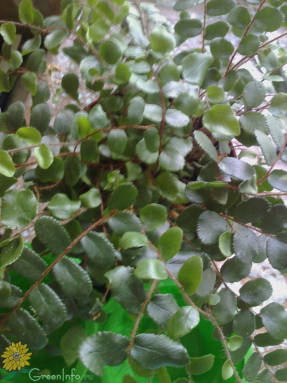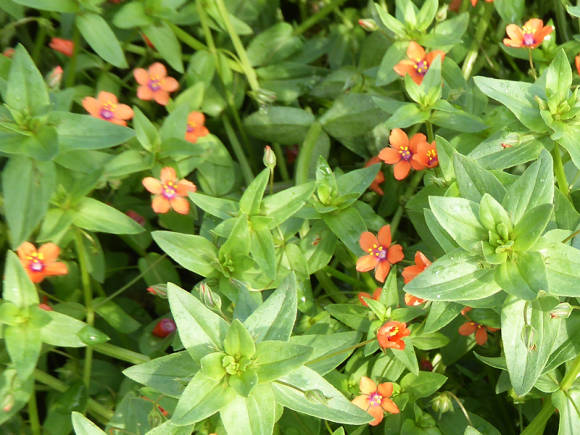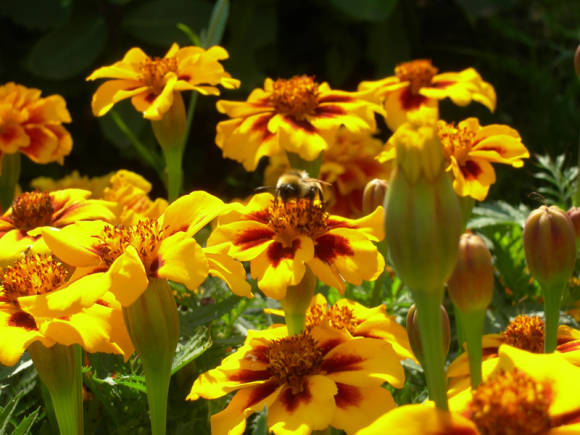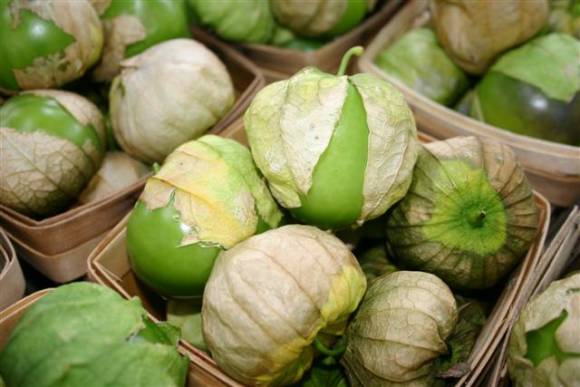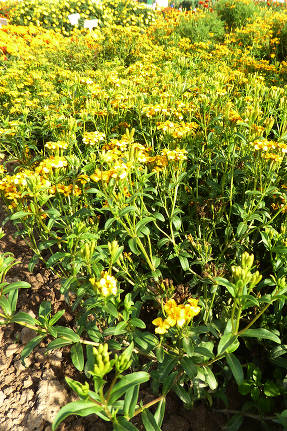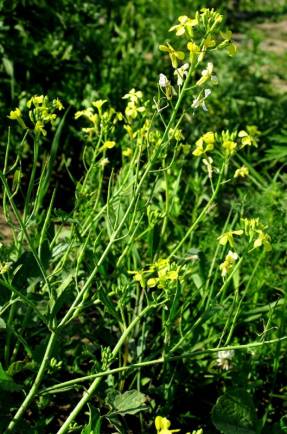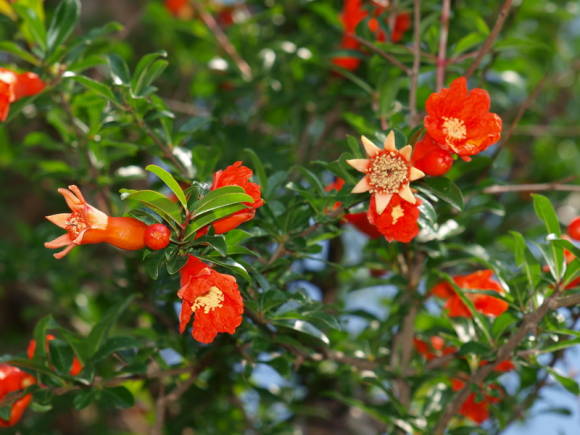800x600 Normal 0 false false false RU X-NONE X-NONE MicrosoftInternetExplorer4
A bit of history
St. John's wort has been used as a remedy for a very long time. It was used by the father of modern medicine, Hippocrates. Dioscorides and Pliny in the 1st century AD prescribed St. John's wort for sciatica, burns, fever, infused with wine - for the bites of poisonous snakes. But the medieval herbalist of the XI century Hildegard Bingen did not favor him, pointing out only properties harmful to livestock.

The Latin name of the genus consists of two parts - hyper - above, above, above, and eikon - image, image, icon. This is explained by Greek and Roman traditions - to keep a bunch of St. John's wort in the house in order to drive away evil spirits, and later by the medieval tradition - to put a bunch of grass on top of the icon to ward off the forces of evil. It was even used to remove spoilage.
Among the ancient Germans, St. John's wort was dedicated to the sun god Baldus. In many European countries and the United States, St. John's wort is called the grass of St. John - in honor of John the Baptist (in fact, this is how both the English and German names are literally translated), on the eve of Christmas, when St. John's wort blooms (June 24 for Catholics). Many legends are associated with this, the essence of which basically boils down to the fact that the red juice from the flowers reminds of the shed blood of John the Baptist and his martyrdom.
In the Middle Ages, St. John's wort was a very revered medicinal plant. Konrad von Megenburg wrote that it strengthens the heart and liver, cleanses the kidneys, heals wounds and removes poisons. The unforgettable Philip Aurelius Theophrastus Bombastus von Hohenheim, or in short Paracelsus, in one of his books pointed out the property of the plant "to expel evil spirits, terrible thoughts that lead people to despair", and modern scientists prescribe St. John's wort preparations against depression. Medieval doctors called St. John's wort "Fuga Daemonum" - from lat. fuga - "flight", "chase", that is, the flight of demons or the pursuit of demons.
St. John's wort, collected precisely on June 24, was considered especially effective in medieval Europe, and was used for rheumatism, gout and toothache.
St. John's wort earned its Russian name due to its phototoxic properties. When eaten by livestock in a pasture in large quantities, animals with white hair experience reddening of the skin and even burns. In Russia, besides the official one, St. John's wort has many local folk names, including: bunny, hare tree, hare blood, hare blood, grass bells, vertebrae, St. John's wort, healthy grass, St. Ivan's potion, St. Ivan's grass, blood man, blood man, brave blood grass, red grass, sevenfold blood, wild chicken, ailment.
What is the healing power of St. John's wort
St. John's wort herb contains essential oil (up to 1.25%), sterols (3-sitosterol), triterpene saponins, alkaloids (0.3%), nitrogen-containing compounds (choline), vitamins (C, E, carotene), phenol carboxylic acids and their derivatives, coumarins, tannins (3-12%), including catechins, 2-5% flavonoids (quercetin, rutin, quercitrin, isoquercitrin, hyperin), anthocyanins (5.7%), anthraquinones (dye hypericin, pseudohypericin, protopseudohypericin, hypericodehydro-dianthrone, frangulaemodinanthronol), phloroglucinol derivatives (hyperforin, the content of which is maximal in the seed capsules), leukoatocyanidins, higher aliphatic hydrocarbons (octacosan, triacontalic acids, and citonic acids), high
pharmachologic effect

The range of application of St. John's wort is extremely wide. Meticulous German experts tried to figure out which of the substances contained in it works. And after lengthy research, certain results were obtained, although far from complete.
Hypericin, which is a fluorescent red dye, is responsible for photosensitizing, antimicrobial (even active against staphylococcus), antiviral effect, antidepressant (affects the content of serotonin and melatonin, the lack of which in brain cells can lead to depression).
Quercetin and quercitrin are monoamine reductase inhibitors, thereby exhibiting an antidepressant effect.
Tannins are "responsible" for the astringent action.
Procyanidins and amentoflavones - antioxidants, eliminate dyspeptic phenomena in the gastrointestinal tract, have a vasodilator, anti-inflammatory, wound healing effect. Hyperforin has a wound healing effect on burns, wounds, anthelmintic, antibacterial action, regulates the level of neurotransmitters or neurotransmitters (substances that transmit nerve impulses to brain tissue), a potential remedy for cancer treatment.
Flavonoids are likely to have a sedative, diuretic, and choleretic effect. Xanthones - antidepressant, antibacterial, antiviral, diuretic, improve heart function.
In general, all these biologically active substances, collected in St. John's wort, have a beneficial effect on a wide variety of diseases.
When is St. John's wort used?
Given the wide variety of active ingredients, St. John's wort is effective for a wide variety of diseases. Indeed, from 99 diseases.
Water infusions and decoctions of St. John's wort are prescribed for gastritis, acute and chronic enteritis and colitis, for bacterial intestinal diseases, and alcohol tincture is effective for dysbiosis. Good results in diseases of the gastrointestinal tract are also obtained by taking St. John's wort oil.
St. John's wort is prescribed for biliary dyskinesia, cholecystitis, cholelithiasis, hepatitis, flatulence. Decoctions and infusions are used as a diuretic for inflammatory kidney diseases, urolithiasis, with a decrease in the filtration capacity of the kidneys, and fluid retention in the body. In folk medicine, it is used for urinary incontinence, cystitis, urethritis, prostatitis.
Tincture of St. John's wort (1: 5 in 40% alcohol) is used for purulent otitis media in the form of turunda soaked in tincture. Diluted 1 teaspoon of tincture in a glass of boiled water is used as a gargle for stomatitis, periodontal disease, gingivitis, chronic tonsillitis and tonsillitis. With a runny nose and sinusitis, it is effective to instill St. John's wort oil in the nose.
In case of burns, the use of St. John's wort oil promotes rapid skin regeneration and prevents the appearance of scars on it. This plant has a tonic and tonic effect. St. John's wort can be used alone or in combination with other plants.
St. John's wort and impotence
Recently, the literature has often begun to indicate that St. John's wort causes impotence in men and the growth of facial hair in women. However, this information has not been confirmed by any scientific data. On the contrary, there is evidence of a positive effect of St. John's wort in impotence. This plant stimulates the activity of the endocrine glands, and therefore increases the production of sex hormones, including androgens. At the same time, St. John's wort itself does not have an androgenic effect. That is, he cannot provoke the growth of facial hair in women (as, for example, with prolonged use, licorice provokes gynecomastia in men).
St. John's wort and depression

The antidepressant property of St. John's wort in Russian literature began to be mentioned only in the last decade, and, for example, in Germany it is the most common mild antidepressant, which is prescribed for mild and moderate depression, seasonal emotional disorders, insomnia, and anxiety. Studies have shown that St. John's wort preparations combine the antidepressant effect of several pharmacological groups of antidepressants at once.
On the one hand, it increases serotonin levels in brain cells. Lack of this substance in nerve cells can cause depression. Selective serotonin uptake inhibitors, one of the commonly used groups of antidepressants, act similarly. On the other hand, as studies have shown, it is possible that St. John's wort "works" as an inhibitor of monoamine oxidase.The enzyme monoamine oxidase destroys neurotransmitters - serotonin, dopamine, norepinephrine, the lack of which in brain cells again leads to depression. Data from other studies suggest that St. John's wort increases blood dopamine levels and acts as tricyclic antidepressants. With all this, St. John's wort does not have side effects of all the groups of pharmacological drugs listed above.
In Germany, a dry extract of the herb St. John's wort, standardized for the content of hypericin, is very widely used. The duration of treatment for depression, anxiety and insomnia is 4-6 weeks.
How to cook it correctly
This is a whole science. It all depends on what kind of therapeutic effect you want to get. When preparing aqueous infusions, not all active substances pass into the solution. Hypericin, for example, almost all of it remains in the raw material, therefore, one should not expect a strong antimicrobial effect from St. John's wort tea, but almost all tannins pass into an aqueous infusion. In addition, studies have shown that the antidepressant effect of water infusions and decoctions is also minimally expressed. But alcoholic tinctures give the maximum result. Therefore, let us dwell in more detail on the features of the preparation and use of the main dosage forms of St. John's wort.
Water infusion St. John's wort is prepared at the rate of 1 tablespoon of crushed raw materials for 1 cup of boiling water. Insist 2 hours, filter and take 1/3 cup 3 times a day for rheumatism and diseases of the gallbladder. Due to the content of catechins, a certain vessel-strengthening effect is present.
Decoction cook in the same ratio as the infusion, but boil for 10 minutes, cool and filter. It is taken orally as an astringent for diarrhea, colitis. For rinsing with stomatitis and gingivitis.
Herb tincture prepared with 50 or 40% alcohol from dry raw materials and 96% - from fresh raw materials. Alcohol dissolves hypericin well - one of the main active ingredients of St. John's wort. 50 g of crushed dry herb St. John's wort is poured into 0.5 liters of vodka or 50% alcohol. Insist 3-4 weeks and take 1 teaspoon 3-4 times a day half an hour before meals.
St. John's wort oil, or oil extract, gives excellent results with local therapy. It is prepared from fresh raw materials. Fresh flowers of St. John's wort are tightly placed in a glass jar, filled with refined sunflower or olive oil so that it covers the raw material with a layer of 1-2 cm, covered with a lid and exposed to bright sunlight (required condition!). The oil is infused for 4 weeks, stirring daily until it acquires the color of a ripe cherry. Then it is squeezed through cheesecloth, filtered through a dense fabric and left alone for a day. When standing, the contents of the jar are divided into three layers: at the very bottom, a thin, light and unpleasantly smelling layer of yeast forms, above it there is a small layer of water and on top - an oil extract of St. John's wort. The top layer is poured into a dark glass bottle. Store in the refrigerator for no more than a year.
It is used to treat burns, microclysters, instilled into the nose with a cold, drink for stomach and duodenal ulcers, gastritis and food poisoning.
Attempts to obtain oil from dry raw materials were unsuccessful. In addition, as recent studies have shown, when fresh raw materials are infused in bright light, complex photochemical and enzymatic processes take place, as a result of which hyperforin is formed, which has such a strong wound-healing and antimicrobial effect. In grass and other dosage forms, it is almost not present.
St. John's wort oil is used for injuries, myositis, myalgia, and wounds. It improves local blood circulation, and hyperforin has antimicrobial and antiviral effects, including against multi-antibiotic-resistant strains of Staphylococcus aureus.St. John's wort oil has antiviral and analgesic effects in shingles.
Ready-made preparations
Hypericum tincture (Tinctura hyperici). Prepared with 40% alcohol in a 1: 5 ratio. Used as an astringent and anti-inflammatory agent in dental practice. Inside appoint 40-50 drops 3-4 times a day. For rinsing - 30-40 drops for half a glass of water.
Contraindications: St. John's wort naphthodianthrones are capable of exhibiting a phototoxic effect in case of an overdose, enhance the skin's reaction to UV radiation, and therefore people with sensitive skin when taking St. John's wort and its preparations should protect the skin from direct sunlight. In some cases, digestive problems, allergic skin reactions and a feeling of fatigue can occur as side effects. Long-term use may cause a feeling of bitterness in the mouth.
It is not recommended to use St. John's wort simultaneously with coumarin-type anticoagulants, cyclosporine (immunosuppressant), digoxin, indinavir and other proteinase inhibitors in the treatment of HIV. The combined use of St. John's wort with these drugs can reduce their effectiveness. St. John's wort induces the production of enzymes, especially Cytochrome P450, that decompose drugs, and reduces the effectiveness of treatment.
Nutritional value of St. John's wort
St. John's wort is used in the food and alcoholic beverage industry. It is added as a seasoning in fish dishes, used as a surrogate for tea. This plant is widely used for the preparation of many bitter tinctures (St. John's wort, Erofeich), almost all balms, it is included in the recipe for the wines "Bouquet of Moldova", "Morning Dew", etc.
To relieve stress, improve well-being after hard physical and mental work, as well as to improve appetite and digestion, you can prepare a food tincture on vodka (see St. John's wort tincture). Take 50 ml before meals.
About medicinal types of St. John's wort, the rules of growing and collecting raw materials, read on the page St. John's wort.
